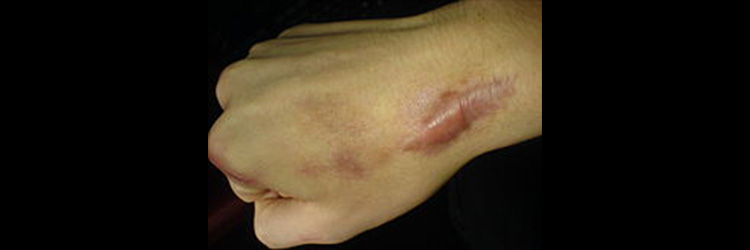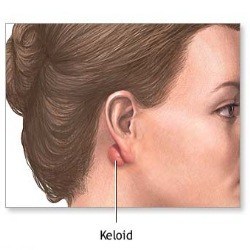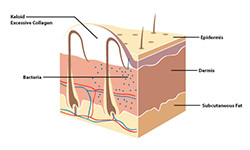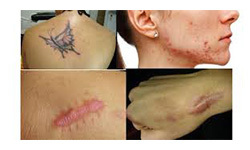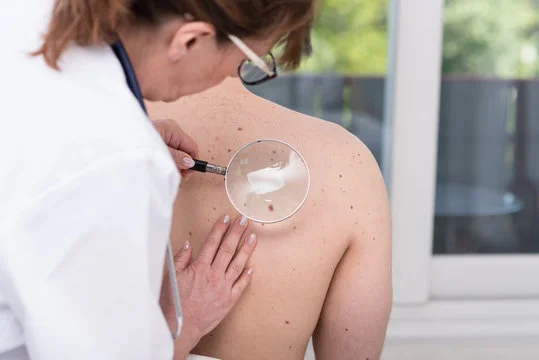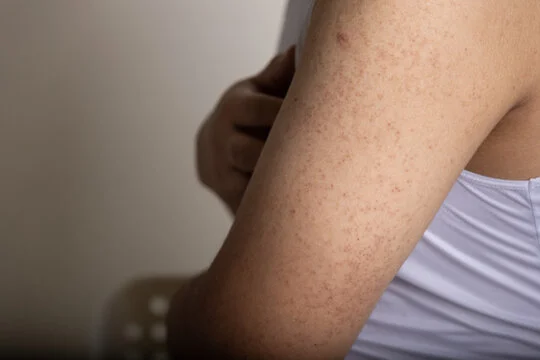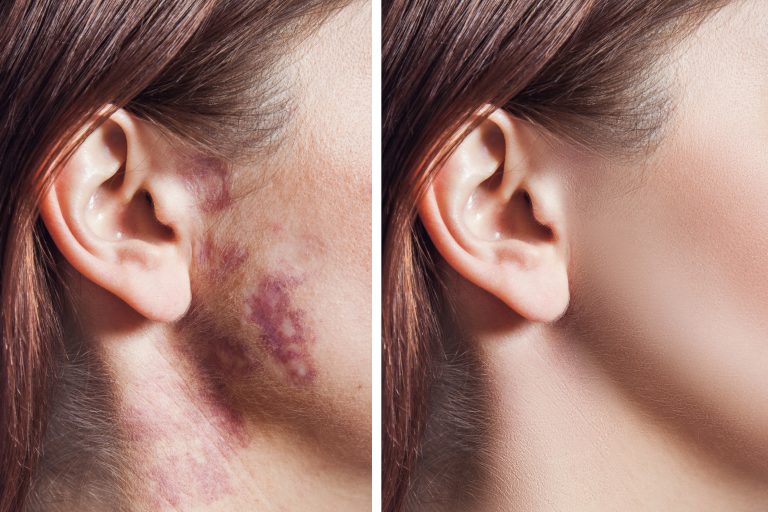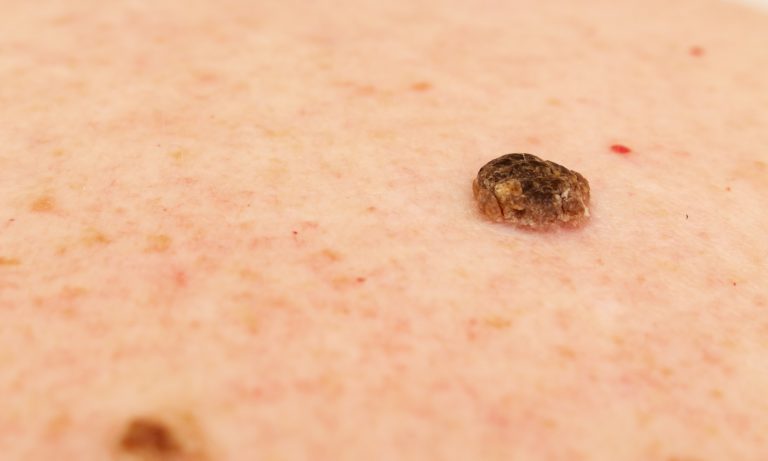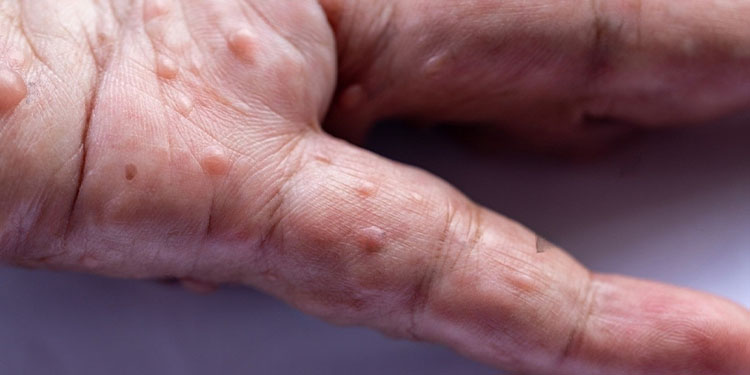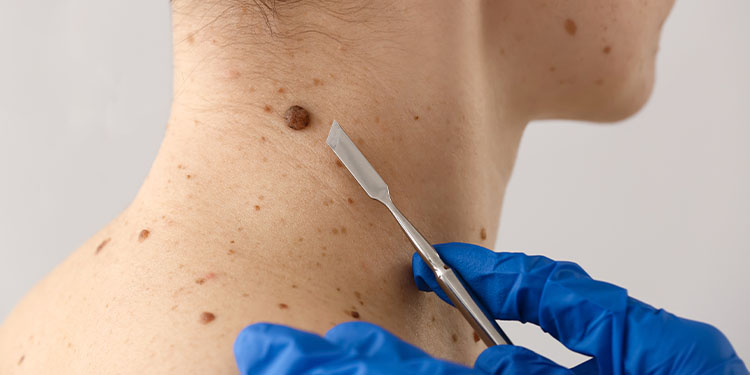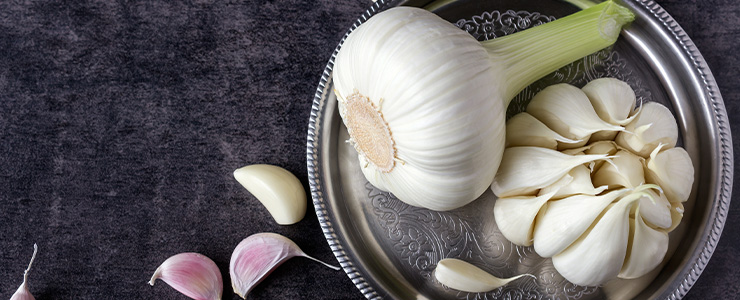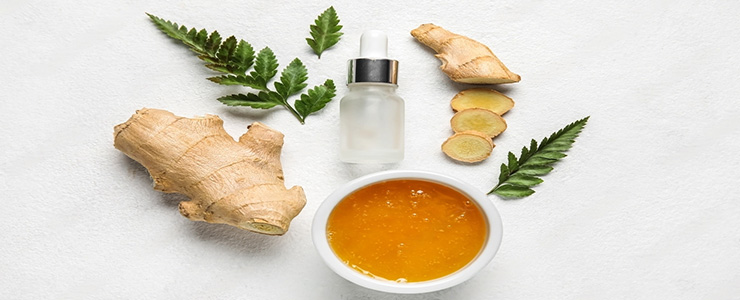Have you ever noticed scars on your parents’ or grandparents’ arms, from a smallpox vaccination? A slightly raised, bumpy scar that is visibly larger than a regular scab or wound? Well, what you see is a type of scar called a keloid. While the growth may look disturbing, keloids are not cancerous.
Let’s break down keloids, how they form, and how to treat them.
What Is A Keloid?
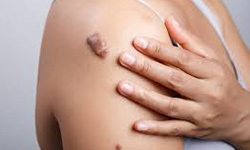
Keloids can appear anywhere on the body including the arms and feet, but are genrally found on the ears, neck, shoulder, chest and back
In terms of size, keloids can range from inch-long scars to scars as large as a football. Large keloids tend to form on large patches of skin, like the shoulders and back.
What Are It’s Symptoms?
It is pretty easy to notice when a keloid begins to develop, even though it takes a while for the scar to appear in its full form.
Appearance: Most keloids begin as purplish, pinkish or reddish scars which are slightly raised. On the earlobe, it is usually round or egg-shaped. On other parts of the body, like the chest, arms, legs or neck, it tends to take the shape of the scar with a raised, flat surface, before growing out. Keloids also tend to get darker over time.
Growth: Keloids appear slowly, and grow slowly as well. It can take anywhere from 3 months to a year to properly notice the first signs of a keloid. Most keloids tend to grow slowly, and can spread for weeks or months. At times, it can even grow for years. However, some keloids can grow quickly – tripling in size in a matter of months.
Touch & feel: Upon touch, Keloids feel different from the surrounding skin. They tend to feel soft, dough-like or rubbery, and are firm. Keloids are solid and remain fixed without moving. Some keloids that appear on the neck, stomach or ear may hang by a stalk, which can move when touched.
Itching, pain or tenderness: In the growth phase keloids can be itchy and cause pain – sometimes even a sharp, shooting pain concentrated in the area.
What Causes Keloids?
There is no proper scientific explanation of why keloids occur and develop – it is an overgrowth of skin after a cut, injury, or surgery. Keloids form because the normal process of scarring goes into overdrive.
- In normal cases, when the skin gets damaged, fresh skin grows over it as part of the healing process, and the damaged skin slowly fades away.
- In the case of a keloid, collagen production speeds up and too much collagen is laid down on the skin, which causes the skin to “heal” more than it needs to.
- Instead of fading away, the scar tissue remains fixed where it is, gradually layering with more skin and getting bigger.
The real scientific reasons for this remain unknown – though it is interesting to note that keloids are a distinctly human condition. Animals are not known to develop keloid scars.
Keloids can also affect people who have a family history, and tend to occur between the ages of 10 and 30. While they can appear later than 30, children below 10 years of age rarely get keloid scars.
Types Of Keloid Scars
Some of the varied types of keloid scars are
- Flat keloids: These are keloids which do not rise significantly above skin level, do not form keloid tumors or nodules on the skin.
- Linear keloids: These keloids grow and spread in a linear manner.
- Guttate Keloids: These keloids appear in a dotted pattern and are often seen in patients who suffer from psoriasis. The lesions are numerous and smaller in a size of keloid, and can make the injections more effective.
- Superficially Spreading Keloid: These keloids grow and spread over a wide area of the skin. If they cover the joints, range of motion and movement can be limited. These keloids grow faster and get bigger in a short span of time.
- Hyper-Inflammatory Keloids: This is a subset of flat keloids which are very painful, smaller in size and generally appear along the mid-line of the chest. They are very tender to touch and can they ache and hurt all day long.
How To Get Rid Of Keloids
Dermatologists may recommend multiple treatments or a combination of treatments for keloids. You need to address what you are trying to achieve through the treatment.
- Injections: Corticosteroids and other medicines can be injected into keloids to help shrink the scar. Patients receive a round of injections every 3-4 weeks, this helps relieve symptoms and make the keloid feel softer.
Between 50% and 80% of keloids shrink after being injected. Many of these keloids, however, will regrow within 5 years. For better results, dermatologists often add another therapy to the treatment plan. - Surgical removal (keloid surgery): This treatment involves surgically cutting out the keloid. While this may seem like a permanent solution, it’s important to know that nearly 100% of keloids return after this treatment.
- Pressure earring, dressing, or garment: This is often used after keloid surgery. Putting pressure on the area reduces blood flow, which can stop a keloid from returning. 90% to 100% of patients who use this treatment after keloid surgery can prevent another keloid.
- The pressure earring tends to be easiest to wear:It is often recommended after a dermatologist removes a keloid from an earlobe.
- Laser treatment: This can reduce the height and fade the color of a keloid. It’s often used along with another treatment like a series of corticosteroid injections or pressure.
- Silicone sheets and gels: These may be used along with pressure to prevent a keloid from returning. Silicone is sometimes used alone to flatten a keloid.
- Cryotherapy: This method works best on small keloids, and freezes the keloid from the inside out while preserving the skin beneath the keloid. It’s used to reduce the hardness and size of a keloid. Having a few cryotherapy treatments before (or after) receiving injections of corticosteroids may reduce the size of a keloid, and can make the injections more effective.
- Radiation treatments: Getting radiation therapy after your dermatologist surgically removes the keloid may prevent the keloid from returning. Radiation may also be used alone to reduce the size of a keloid.
- Ligature: If a surgical thread can be tied around the keloid, your dermatologist may recommend this treatment. The surgical thread will gradually cut into the keloid, which can cause it to fall off. But a new thread must be tied around the keloid every 2 to 3 weeks.
If you are suffering from keloid pain, consult a dermatologist at the earliest. Find a qualified dermatologist for all your skin problems on www.skinandhairacademy.in

